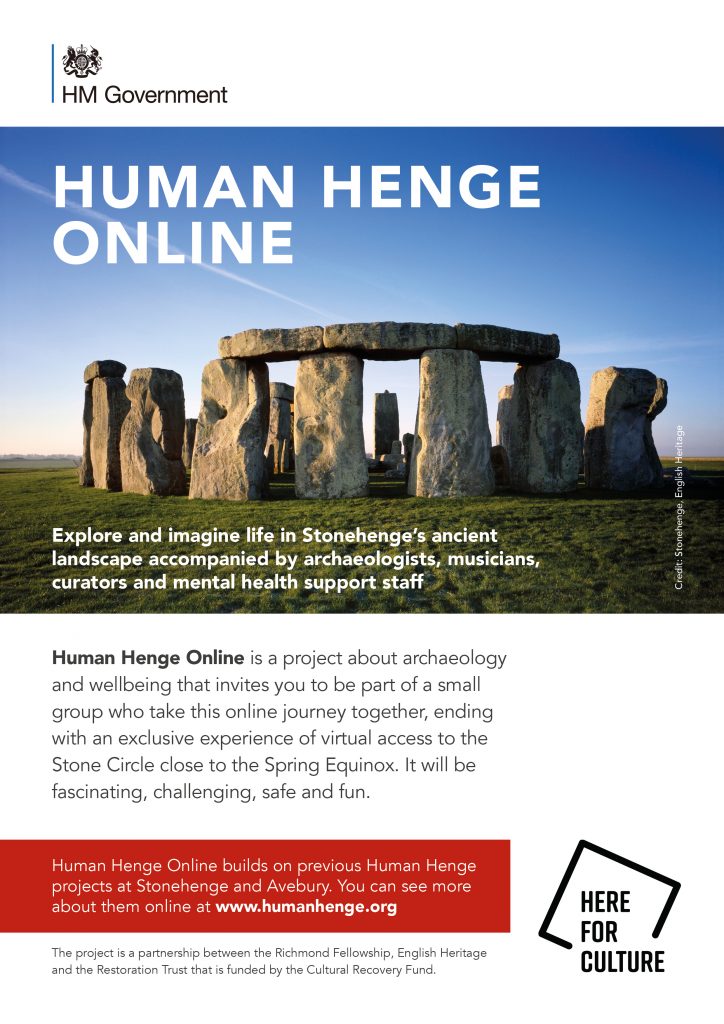Human Henge features in Guardian article about heritage and mental health
Heritage healing: why historic houses improve wellbeing
Staying in a landmark building has been found to counteract stress and anxiety
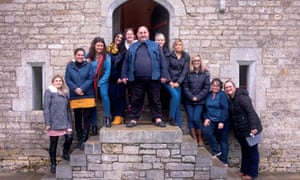
With its low gables and sunny verandahs, the empty former cottage hospital of Winsford is a building like no other in the world. The result of a philanthropic dream shared by a rich widow and a leading Victorian architect, in the 119 years since the ailing people of north Devon were first welcomed under its slate roof, the place has aided many a recovery, including shell-shocked soldiers seeking sanctuary from first world war trenches.
And soon Winsford, at Halwill Junction near Beaworthy, will be helping people again. The disused hospital, designed by Charles Voysey as a gift from the wealthy Maria Medley to the surrounding rural communities between Dartmoor and the coast, and now being restored by the Landmark Trust, is the latest example of a growing faith in the healing powers of heritage buildings. For in the same way that walks through Britain’s forests are now being prescribed as an effective way to help counteract anxiety and stress, so the conservation trusts and charities of the heritage industry are starting to promote the power of ruins and historic buildings to improve mental wellbeing.
“It is a common theme we get back from all our stayers,” said historian Caroline Standford, of Landmark, a charity that rescues, restores and then rents out significant historic buildings. “So many say how much calmer they feel. It is so appropriate that we can use Winsford next year, because it is a place that has such a strong sense of nurturing about it.
“It is so much more welcoming than what we think of as a medical centre today. Before Voysey built it, his only cottage hospital, the villagers in the 13 surrounding rural parishes who fell ill had to travel all the way to Exeter or Okehampton.”
From next year, not only will a third of the old hospital be restored for continued use as a community health resource, but each year the remainder will be offered out at no cost for selected dates, along with some of the trust’s other buildings, as a place for those in need, including bereaved children, traumatised veterans and carers, to come and recuperate.
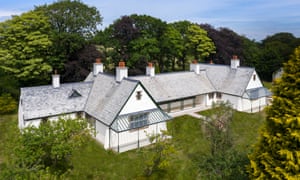
The scheme, called 50 for Free, has been running for five years and was inspired by the way that visitors to the trust’s buildings commented on how their mood was boosted by a stay in an ancient place, or unusual historic venue, away from the trappings of modern life. Applications for the next charitable visits open next month.
English Heritage and Historic England, two of Britain’s other major heritage and conservation charities, are also exploring the therapeutic side of their properties. English Heritage has set up days for people living with mental health problems and on low incomes at Stonehenge, a site it maintains jointly with the National Trust. Human Henge events focus on the site’s strong associations with natural healing and contemplation, much as the Japanese therapy of shinrin-yoku, or forest bathing, is now being prescribed by some doctors treating depression.
Historic England has also found that visits to historic towns, ancient places of worship and archaeological sites have the same beneficial effects on blood pressure and general wellbeing as social sporting activity.
Research by University College London five years ago was among the first to make the link between heritage sites and mental wellness. It showed that contact with a heritage site, whether as a visitor or a volunteer, frequently improved mood and even promoted a sense of citizenship among isolated and disadvantaged groups.
And this weekend, at the culmination of the annual Heritage Open Days week, many of Britain’s local authorities will be encouraging families to visit nearby museums, stately homes and historic sites as a healthy way to break the repetitive pattern of work, shopping and domestic chores.
While a period of respite in a beautiful castle or folly would probably benefit anyone, Stanford believes that Winsford, offering a moment “out of time”, with no phone or television, was always destined to be a haven of peace and healing again. Now, as the last nails are hammered in by conservationists, it is a place of restoration in both senses of the word.
Spring Equinox gathering at Stonehenge 22 March 2019
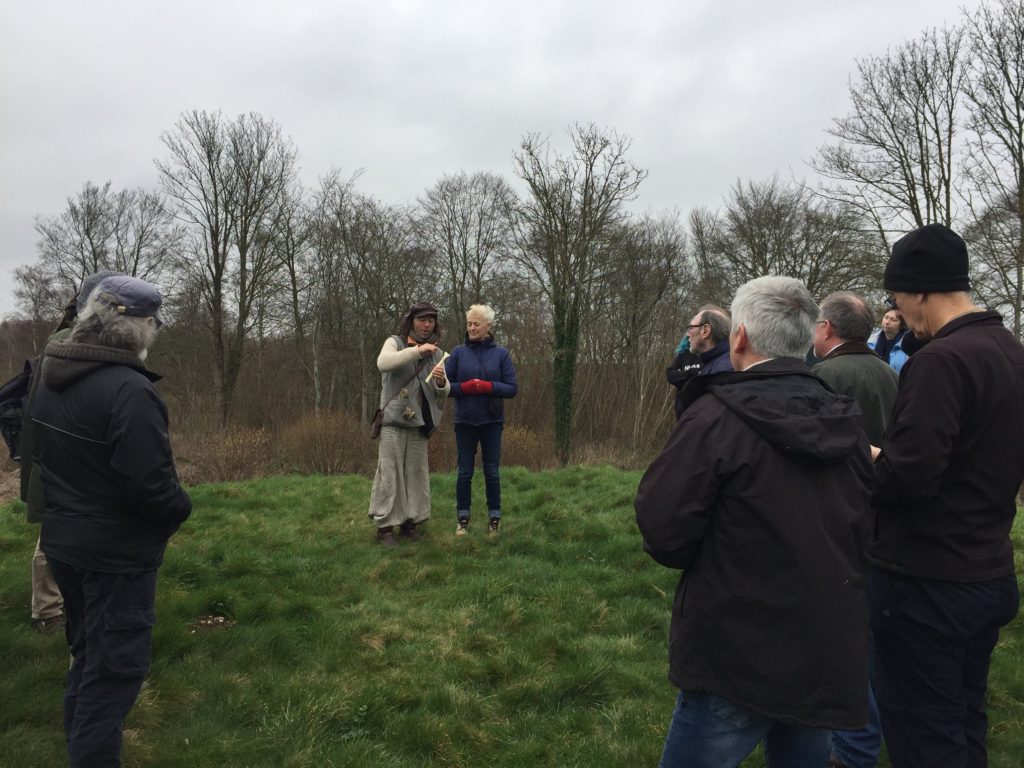
We held another post-project gathering at Stonehenge just after the Spring Equinox. Around 25 people came along. A walk to the Monarch of the Plain led to us standing on the barrows at either side of the west end of the cursus. Prof. Tim Darvill described how the cursus and these two barrows are aligned to the Equinox, rather than to the Solstice. There were musical conversations between flute, jaw harp and drum on top of one barrow, and Max played his swan neck flute on the Monarch of the Plain. We warmed up by a fire in a Neolithic hut, before more music and lunch in the Education Room.
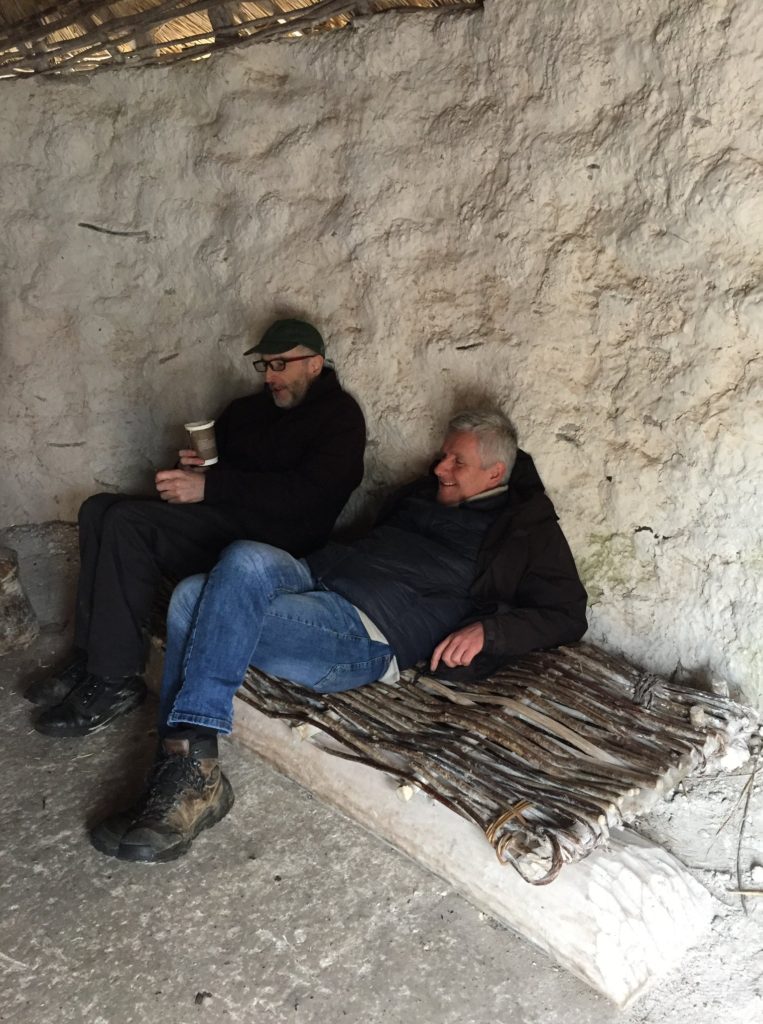
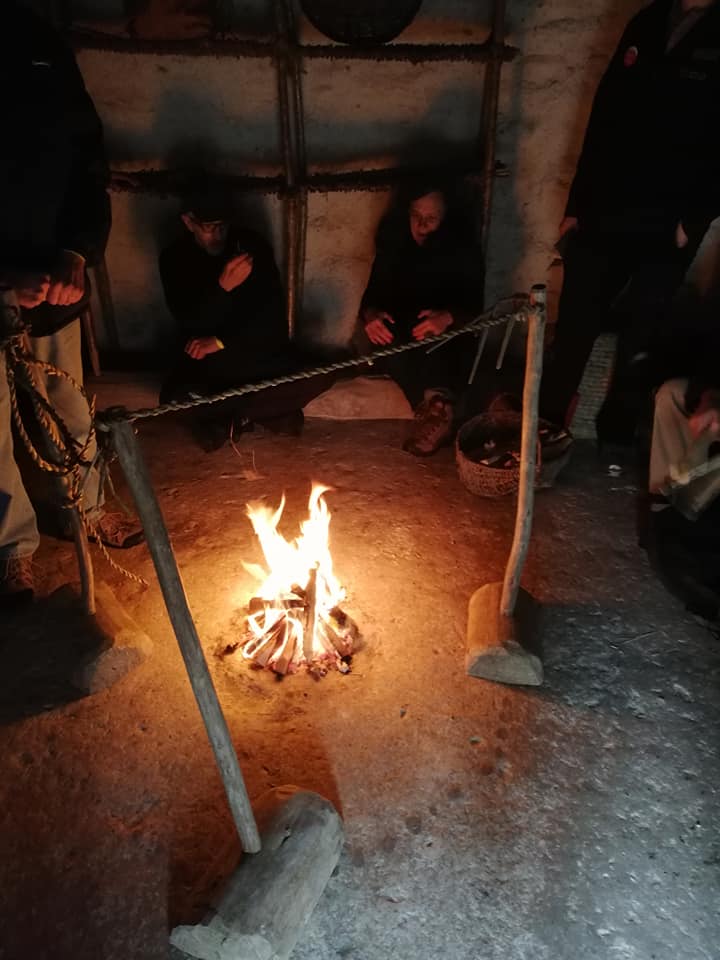
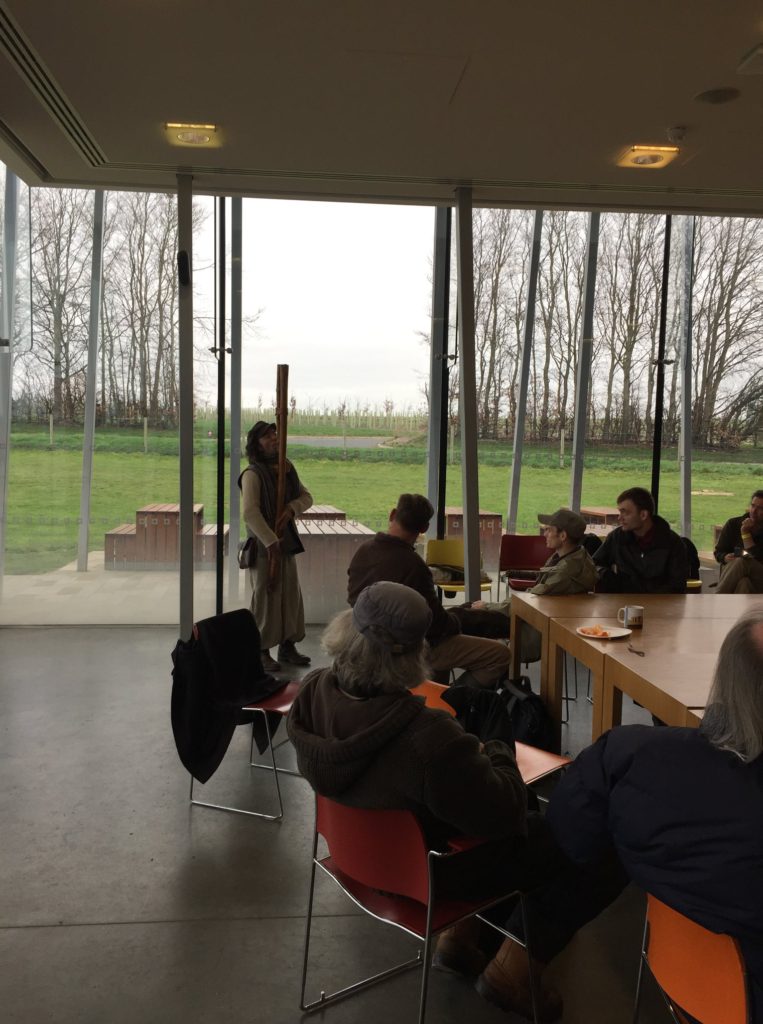
Thanks to Human Hengers, Prof Tim Darvill, Stonehenge staff and volunteers who lit the fires and smoothed the way, and Maxence des Oiseaux for making it such a special event.
HUMAN HENGE EVALUATION REPORT
Laura Drysdale, December 2018
This is an edited version of the report we provided to the Heritage Lottery Fund on completion of Human Henge
SUMMARY
Based at Stonehenge, Human Henge engaged people living in Wiltshire with mental health conditions in a creative exploration of the ancient landscape. The project began in September 2016 and ended in December 2018. A parallel research project led by Bournemouth University addressed the question of whether Human Henge was an effective way to improve people’s mental health and wellbeing. Evaluation by Willis Newson considered the project’s processes and behaviours as a contribution to its impact on participants mental health.
This evaluation and the research above concludes that Human Henge exceeded expectations in terms of its impact on participants, partners and the wider archive and mental health community. Overall it has been a successful project that we hope can be a model for similar projects to take place in other historic landscapes.
WHY HUMAN HENGE WAS CREATED
Human Henge grew out of a conviction, shared by the partners, that a connection with historic landscapes could play a real part in mental health recovery. Human Henge Change Minds was intended to have heritage, social and mental health outcomes, and as such amalgamated its partners’ concerns. English Heritage and the National Trust are heritage organisations with social purposes. Richmond Fellowship is a national mental health charity with a history of using community assets including historic landscapes for inclusion. Bournemouth University is an academic body with a strong social purpose and local connection. The Restoration Trust is a bridge organisation linking these outcomes, as it supports people with mental health issues to engage with heritage in order to reduce social exclusion and improve people’s mental health.
The project was largely funded by the Heritage Lottery Fund, but additional grants from English Heritage and Amesbury Area Board rooted it in Stonehenge and the local community.
Broadly, Human Henge followed the Activity Plan we submitted with our original application, with agreed amendments. Funding for Human Henge Avebury extended the programme of participation and research and in effect Human Henge at Stonehenge and Avebury became one project. However, this evaluation report focusses on Human Henge Stonehenge.
The first step on securing the grant was to set up a Project Board representing partners and key stakeholders, chaired by Dr Sara Lunt, a trustee of the Restoration Trust. Project Board meetings were well attended and often quite powerful experiences. There was robust debate about important issues, such as the wellbeing of participants the nature of research, ownership and rights over local heritage, and communications strategies. Most meetings were minuted by a Stonehenge staff member who attended for this purpose.
From the outset we did all we could to make Human Henge as safe as possible for everyone involved by policies and procedures which conformed to legislation and best practice. Data protection, communications and safeguarding were key issues where we set up policies in the preparation phase, and put them into practice in our enrolment forms, partnership agreements and employment contracts.
Human Henge aimed to improve the health and wellbeing of people who have mental health problems. It was not a mental health service. Although everyone had a duty of care to participants, to behave sensibly and kindly, and to record and share any concerns, Human Henge did not provide wider support. This was the responsibility of Richmond Fellowship. We maintained these boundaries in order that participants could enjoy Human Henge without feeling that they might be treated as patients or clients. It was also an important safety measure since mental health risk was assessed and managed by Richmond Fellowship.
LOCATIONS
TRAINING IN MENTAL HEALTH AND HERITAGE FOR STAFF AND VOLUNTEERS
In October 2016 we offered staff and volunteers mental health first aid training delivered by an accredited Mental Health First Aid trainer who was also a Richmond Fellowship staff member. 16 people attended, including board members, staff and volunteers.
The Coordinator is an archaeology and natural voice practitioner, so she brought heritage and creative skills to the project. Therefore, it was unnecessary for the Richmond Fellowship Locality Manager to acquire heritage skills, and he already had a deep interest in and knowledge of the natural world and creative writing.
In total 32 people were recruited and 23 people attended the programme as committed participants, i.e. they attended more than half the sessions. All these people consented to take part in the research component of the project.
Participants were enrolled through contact with their Richmond Fellowship support workers. Our recruitment leaflet was designed to be as clear and informative as possible, and also to alleviate anxiety about doing something entirely new. The enrolment form including consent for information sharing, photography and communications, as well as information about the participant and a wellbeing plan. Enrolment forms were held by both Richmond Fellowship and the Restoration Trust.
20 sessions were held, 10 for each group, weekly on Friday mornings (10.30 – 1.30). Transport, refreshments and materials were provided. There was no cost to participants. Each group followed a broadly similar plan:
Human Henge was intended to be a pilot project into the efficacy of using historic landscapes for mental health, so it was essential that we had a robust evaluation strand. This fell into three categories.
- Project staff – the Project Manager and Coordinator – collected data about attendance, events, visitor numbers and so on, for reporting outcomes at that level.
- Bournemouth University were commissioned to carry out research addressing the question: “Does a creative exploration of historic landscape achieve sustained, measurable mental health and wellbeing outcomes for people with mental health conditions?” Answering this was achieved through two parallel investigations. First, a study of available literature and published case studies was collated and published as a chapter in the volume A handbook of well-being edited by Kate Galvin (Darvill et al. 2018). Second was an evaluation of the impact of the Human Henge project on the mental well-being of its participants. This was published in two reports; firstly in June 2017, secondly in December 2018. An appendix to the final report will be produced when Human Henge Avebury participants complete a final 1-year post project questionnaire and focus group.
- Willis Newson were commissioned as the project’s ‘Critical Friend’/Evaluator, with a brief to: take an observer / critical friend role asking sometimes difficult questions; contextualise the project within wider work taking place across the Arts and Health sector / arts on referral / arts and health evaluation and research /good practice; signpost / make introductions to what is going on nationally; comment on how best to make the research findings accessible and implementable with the sector and amongst practitioners. Jane Willis’s report on Why and How does the Human Henge Project Support Participants Wellbeing was completed in July 2018.
Mental health and wellbeing outcomes
In brief, outcomes are summarised below.
Bournemouth University mental health research
It is difficult to answer the original research question “Does a creative exploration of historic landscape achieve sustained, measurable mental health and well-being outcomes for people with mental health conditions?” conclusively at this stage as data collection and analysis is still ongoing. Nevertheless, findings to date highlight that involvement in Human Henge had a positive impact upon participants’ mental health and well-being, and to some degree this was still apparent one year after involvement in the programme. However, caution is required because of the relatively small sample size and the limited extent to which it is can be said to represent the bigger picture. Accordingly, further data collection is needed before any claims about the generality of the findings can be made. It is proposed that a larger study, possibly with a control group, needs to be undertaken to explore the potential of this type of heritage programme for the health and well-being of people with mental health conditions.
Process Cycle
Willis Newson (Arts and Health Consultants) theorise that Human Henge is a cycle of transformative processes through: safety and trust; challenge and risk; achievement and confidence; connection.
- Safety and trust is built by secure partnerships and structures and good communication.
- Participants are overcome challenge and risk through expert facilitation.
- A sense of achievement is felt which leads to increased self-confidence and self-esteem
- Positive feedback to mutual sharing enhances the sense of connectedness.
- The enhanced sense of connection leads to an increased sense of safety and trust.
- New risk and challenge is introduced and the cycle continues.
- A deeper sense of achievement leads to increased self-esteem. Continued sharing leads to deeper connections. Deeper connection and bonding leads to an increased sense of safety.
New Economic Foundation’s Five Ways to Wellbeing.
- Take notice: the whole group has an intense sensory experience of the landscape.
- Be active: people get out and about, walking further and more confidently session by session.
- Connecting: people connect across deep time, with the place they live, and with each other.
- Learn: archaeology, creativity, nature, knowing a place. How to be with a group.
- Give: the group shares the experience. People help each other in practical ways.
Research methodology
Human Henge research by Bournemouth University comprised a mixed-methods approach summarized schematically below. The process was reviewed and approved prior to the start of the first programme in line with Bournemouth University Research Ethics Code of Practice.

It was important to capture both quantitative and qualitative data because the sample size was small and, whilst interesting, means that conclusions derived from the evaluation so far have limited generality. At the start of each delivery of the Human Henge programme the participants completed a baseline questionnaire capturing their thoughts and feelings towards the project. The Short Warwick Edinburgh Mental Wellbeing Scale (Tennant et al. 2007) was used to measure their mental wellbeing, supplemented by questions regarding their interests in history, heritage, and archaeology (see Table 2). The same questionnaire was repeated in the middle and at the end of each 10-week programme, and again for a final time in 2018 a year after the sessions finished. Quantitative data was analysed using descriptive and inferential statistics as well as content analysis, qualitative data from the evaluation was analysed thematically using the Braun and Clarke (2006) process of thematic analysis.
MILESTONES TIMELINE
2016
Sept
Grant received, Project Board Meeting 1 at Bournemouth University
Project manager, coordinator, consultants, designer and volunteers appointed.
Communications policy agreed
Research ethics approval received from Bournemouth University
Enrolment leaflet circulated via Richmond Fellowship
Press release approved.
Group 1 Session plan agreed
Oct
Mental Health Fist Aid training for staff, consultants and volunteers
Human Henge launch event at Stonehenge
Website, social media and publicity material launched
Group 1 participants recruited
Group 1 sessions begin
Group 1 mental health research begins
Nov/Dec
Website and publicity material launched
Group 1 reflective practice research begins
Project Board Meeting 2 at Amesbury Communitea Café
Group 1 sessions culminate in Winter Solstice celebration
Group 2 participants recruited
2017
Jan/Feb
Group 1 end point research
Group 2 mental health research begins
Group 2 sessions underway
March/April
Human Henge introductory session for National Trust staff and volunteers
Group 2 sessions end
Group 2 Human of Stonehenge private Facebook group formed
Radio 4 Open Country programme Stonehenge and Mental Health broadcast
Project Board Meeting 3 at Salisbury Museum
May/June/July/August
Exhibition at Amesbury Library
Stakeholder consultation meeting at Wiltshire Museum
Presentation at Culture Health and Wellbeing International Conference
Exhibition and workshop at Festival of Archaeology Salisbury Museum
Human Henge picnic at King Barrow Ridge
Exhibition at Stonehenge Visitor Centre
Sept/Oct
Project Board Meeting 4 at Avebury
Heritage Open Day walk at Stonehenge
University of the 3rd Age lecture at Bournemouth University
Exhibition at Salisbury Library, Melksham Library, Chippenham Library
Nov/Dec
Funding awarded for Human Henge Avebury
Follow-up research with Group 1 participants
Theoretic Archaeology Group conference session on Archaeology, Heritage and Wellbeing and Mental Health
2018
Jan/Feb
Human Henge Avebury sessions underway
March/April
Project Board Meeting 4 at Avebury
Human Henge Avebury sessions end
Workshop at West of England Learning Symposium
Presentation at Trowbridge Service Users Group
World Heritage Day walk at Avebury
Follow up research with Group 2 participants
Historic Landscapes and Mental Wellbeing conference at Bournemouth University
Exhibition at Bournemouth University, Avebury, Devizes Library, Wiltshire Museum
June/July/August
Heritage and Welling workshop at Canterbury University
Human Henge follow-up event at Ancient Technology Centre
Sept/Oct
National Women’s Register presentation at Salisbury
Nov/Dec
Human Henge follow-up event at Wiltshire Museum
REVIEW
Summary of what worked
Human Henge has amply met all the Restoration Trust’s criteria for success, which are informed by and embodied in the project.
- Participants have problems with their mental health. Human Henge participants had complex mental health needs.
- Participants are involved in management. One participant became a member of the Change Human Henge Project Board, 8 contributed to a Sharing Event and 4 attended a Restoration Trust Participants Council. The Project Board included a Patient Public Involvement member.
- Partnership with heritage and health organisations. The partnership between the Restoration Trust (RT), English Heritage, Richmond Fellowship and Bournemouth was confirmed in a signed partnership agreement which stated that the partners would deliver the project according to our application to Heritage Lottery Fund. All partners are members of the Project Board. Contributing organisations, including the National Trust, Avon and Somerset NHS Partnership Trust are represented on the Project Board.
- Groupwork is the core. All sessions were group sessions and informed by relevant theory and practice. They were based on the view that lasting change can occur within a carefully conducted group.
- Safe framework and practice. The partners’ policies and practices meet the required standards, and due diligence was applied when forming the partnership. Staff and volunteers worked to relevant professional standards and, if it was required for their role, had external validation of their suitability to work with vulnerable people by showing evidence that they have Enhanced Disclosure and Barring Service Certificate (DBS).
- Proper measurement of impact and outcomes. Research by Bournemouth University and Willis Newson. Ethical approval by Bournemouth University Ethics Committee. Participants were recruited as Richmond Fellowship clients rather than NHS patients so research did not need NHS ethics approval
- Sustained and regular involvement. 10 weekly sessions. Three workshop sessions after the project ended. Ongoing informal connections between people and through the Humans of Stonehenge private facebook group. Richmond Fellowship ongoing history projects, including visits to Wiltshire Museum, and a series of workshops at Salisbury Cathedral.
- Privileged access to real cultural assets and expertise. Assets: Exclusive use of Stonehenge Education Room, special access to Neolithic Huts with Stonehenge volunteer input, special access to Stone Circle, special access to National Trust Cottages for King Barrow Ridge. Expertise: sessions with Professor Tim Darvill, Dr Sara Lunt, Katherine Snell, Yvette Staelens, Mark Vyvyan Penney, Briony Clifton. Museum visits included Wiltshire Museum tour with the Director, Salisbury Museum (Festival of Archaeology).
- Encouragement to be creative. Music, pottery, creative writing, photography and encouragement to tell stories and share language and song.
- Learning for staff and volunteers. Health learning: Mental Health First Aid. Heritage learning: Prehistory and the Stonehenge landscape; collections, Neolithic pottery and firing; bread making. Research learning: Staff and volunteer reflective practice focus group. Good practice learning: Project Manager supervision by a Group Analyst, Coordinator supervision by the Project Manager. Professional learning: Staff and volunteers attended relevant professional meetings. Learning from participants: experiences of nature, photography, music, spirituality, history, archaeology, managing mental health, practical financial advice and friendship.
- Progression for participants. Volunteering and participation opportunities offered by all partners. Participation opportunities taken up at conferences, workshops, events and media.
Resources. We needed to allow more time and money for project management and digital engagement. As a small organisation whose backroom activities are funded through projects, we need more unrestricted funding to maximize the impact of this high-profile project. Our Chair devoted more pro-bono time to the project than she had anticipate
The demands of the site. The immense benefit of running a project at Stonehenge in terms of public and professional attention was matched by the need for attentive management of the delicate balances required in dealing with conflicting interests at a contested site. We were not always successful in negotiating these tricky waters, and indeed they were not really our business. However they sometimes impacted on the project, or rather they demanded more time than we had allocated for project management.
Partnership. The Restoration Trust is a small organisation managing a complex partnership of much bigger organisations, some of whom have competing interests.
Cuts to services and contracts. The Richmond Fellowship’s outreach and inclusion contracts have been reduced since the project began, and this has made it more difficult for the Locality Manager to provide staff resources to support people to attend follow-on activities.
Mental health discrimination. There is a level of unconscious discrimination against people with serious mental health problems which is manifest by partner organisations and professionals in unexpected ways. Excessive anxiety about what people might do on site, or how to cope if they became unwell reflect wider societal attitudes. Participants were sometimes surprised and disconcerted by views expressed by volunteers, staff, students and the general public.
Ending the programme. The ending of the programme was experienced as a considerable loss, as it was rather abrupt. As a result we gained funding to run three follow-on sessions, which have been successful gatherings of Human Hengers at local heritage venues (Ancient Technology Centre, Wiltshire Museum, Stonehenge Stone Circle in March 2019).
CONCLUSION
Overall Human Henge has been a successful project, with benefits for participants, partners, stakeholders and the local and professional community that went beyond our expectations. It justified our original supposition that walking with intent in ancient landscapes has the potential to support the recovery of people with complex mental health needs, although research outcomes are not conclusive. However the enthusiasm with which Human Henge was received by both heritage and health professionals shows that imaginative use of heritage landscapes can make a profound difference to individuals, and we hope also to mental health and heritage policy and practice at local and national levels.
We are very grateful to our partners, staff, volunteers, researchers, board members, local media and national media, and those who visited Human Henge exhibitions and events. We thank the Heritage Lottery Fund for their grant, which enabled the project to take place. Our foremost thanks go to all the Human Hengers, who through their courage and commitment turned the idea of a creative exploration of historic landscapes into a powerful experience for everyone involved.
Heritage Lottery Fund – Historic Landscapes and Mental Health at Stonehenge
The Heritage Lottery Fund included a great piece about our Human Henge project on their website – click on link below to read.

Human Henge participants down at the river bank.
https://www.heritagefund.org.uk/news/how-stonehenge-can-improve-mental-health-and-wellbeing
How a Stonehenge project helped people’s wellbeing
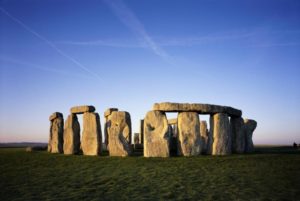
Photo credit: English Heritage
Heritage Lottery Fund featured our Human Henge project on its website this week.
Click on the link below to read this article.
https://www.hlf.org.uk/about-us/news-features/how-stonehenge-project-helped-peoples-wellbeing
11 September 2018 – Ancient Technology Centre
 Human Henge participants at the Ancient Technology Centre flintknapping and breadmaking.
Human Henge participants at the Ancient Technology Centre flintknapping and breadmaking.
Wayfaring at Maiden Castle

Procession to Maumbury Rings: 15 September, 2pm
Installation: 17 – 21 September, daylight hours
Live event: 22 September, 7.30pm
Wayfaring is a journey of exploration, inspired by the present landscape and ancient routes of the Icknield Way.
The culmination of our groundbreaking Lifecycles and Landscapes project. Artists And Now: will create a series of artworks in Areas of Outstanding Natural Beauty inviting audiences to think about movement and migration; how we arrive at, understand, inhabit, protect and leave a space.
Using local and found materials the artists will craft an installation on Maiden Castle which audiences can move through, investigate and contribute to. On the final weekend fire illumination, music and performance will transform the installation into an intimate celebration.
The Wayfaring digital artwork, an evolving sketchbook of observations and learnings created by And Now: that compliments the live work can be found here.
Co-commissioned by Norfolk & Norwich Festival, Corn Exchange Newbury, 101 Outdoor Arts Creation Space and Oerol Festival.
Human Henge catch up
Events
2018
Tuesday September 11th – Ancient Technology Centre Day for Human Henge members
Friday December 14th – Wiltshire Museum Day for Human Henge members
Wednesday March 21st – Spring Equinox Day for Human Henge members
Saturday October 6th – Audacity to Dream Conference with Human Henge session
Publications
Just out
Case study in Museums as Spaces for Wellbeing, a second report by the Alliance for Museums, Health and Wellbeing

Coming up
Case study in the Heritage Alliance’s forthcoming report on Heritage and Wellbeing
Historic Landscapes and Mental Wellbeing publication of papers from Human Henge Historic Landscapes and Wellbeing Conference April 2018
Media coming up
Feature in the National Trust Special Place campaign, celebrating Avebury and Stonehenge.
Feature in Heritage Lottery Fund Changing Lives blog in October, celebrating 100 years of public ownership of Stonehenge
Summer Solstice 2018 – Human Henge on the Heritage Lottery Fund blog
Thanks to the Heritage Lottery Fund for featuring Human Henge in their latest blog post about Summer Solstice celebrations at Stonehenge!
How Stonehenge can improve mental health and wellbeing
“I’ve actually been a human being for three months, rather than (being seen as) an illness or a condition or a client or an end user.”
Female participant in the project
Our Human Hengers have had some amazing experiences celebrating Winter Solstice and the Spring Equinox at Stonehenge over the last couple of years.
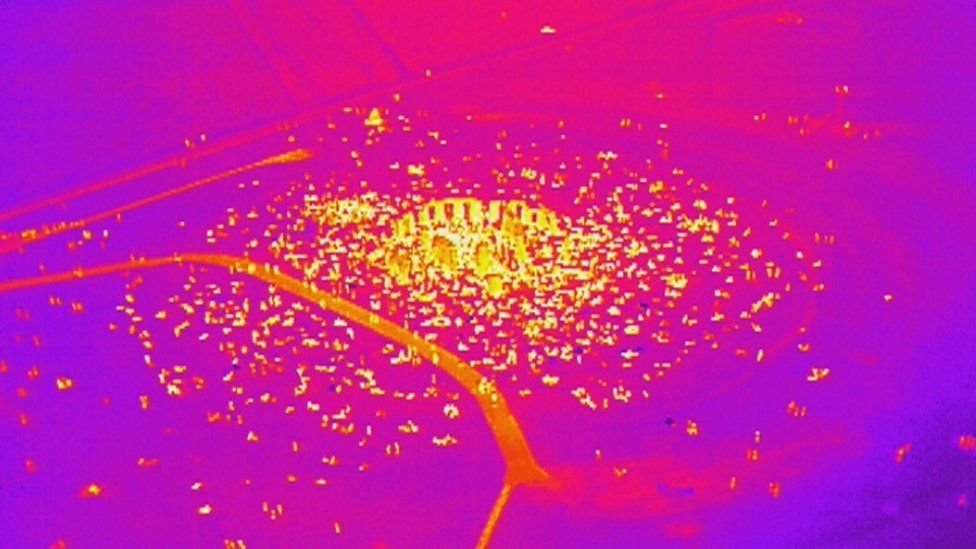
Summer Solstice at Stonehenge from the air with infra red, photo by Wiltshire Police

Summer Solstice, photo by Amy Freeborn

Winter Solstice, photo by Jessica Swinburne

